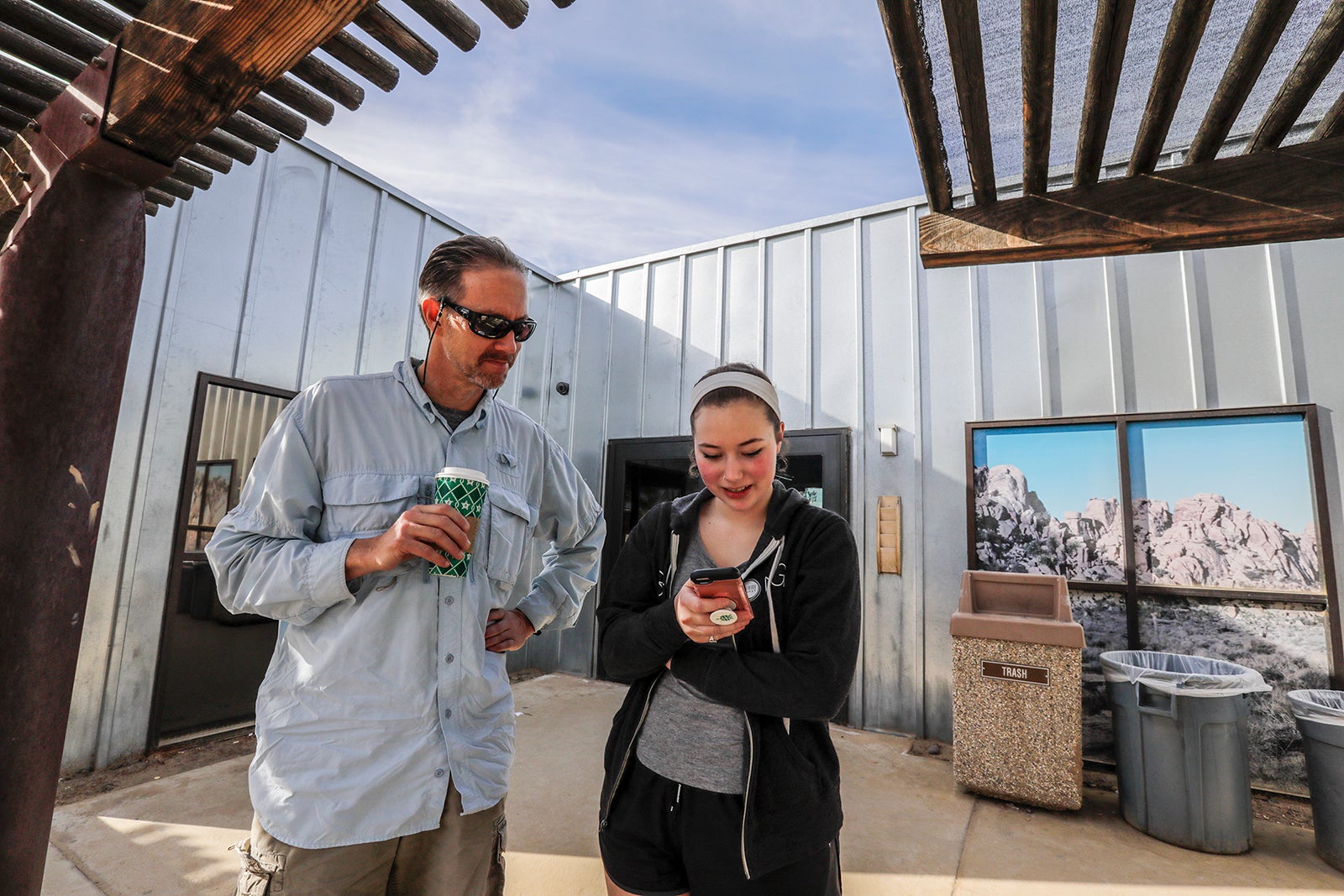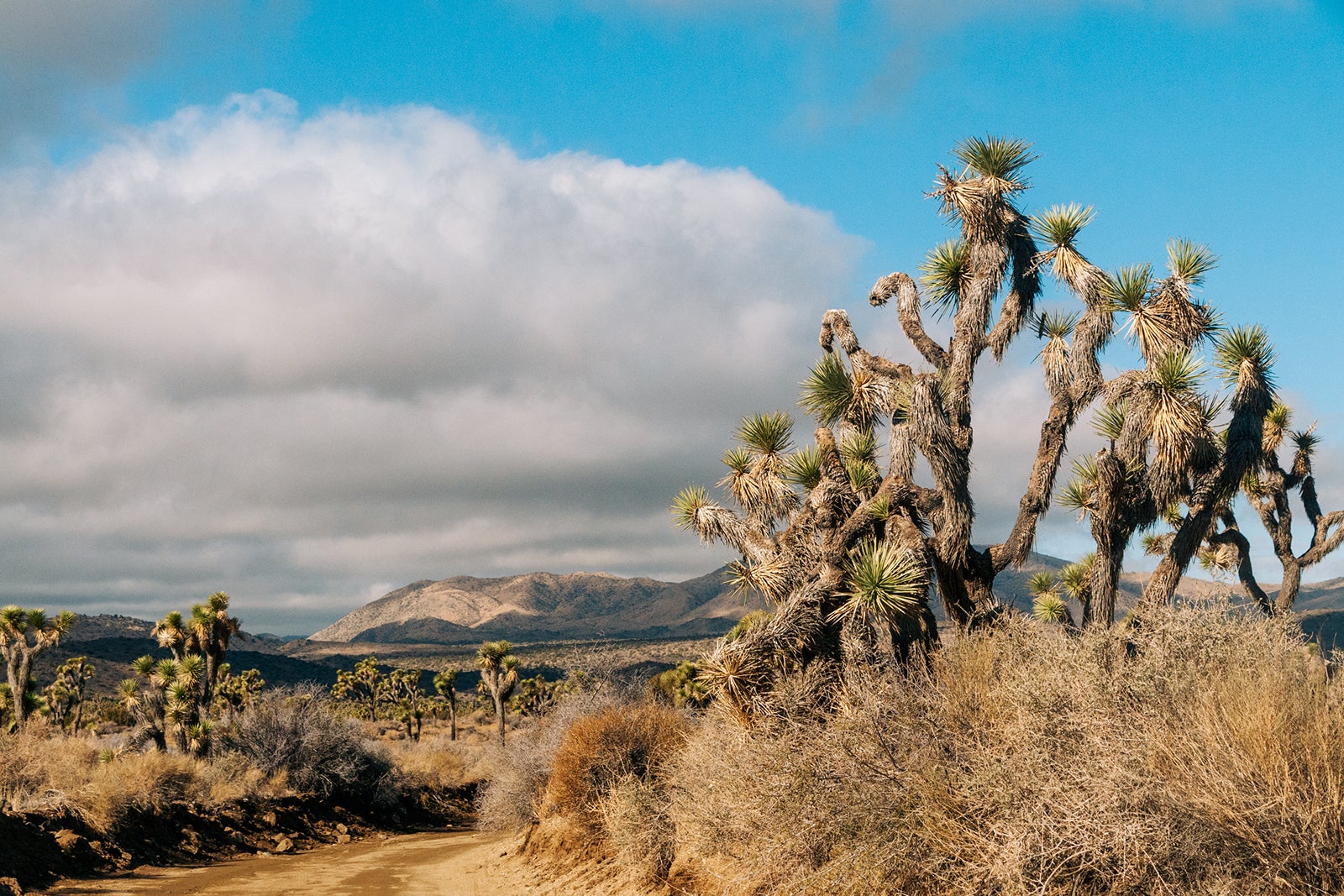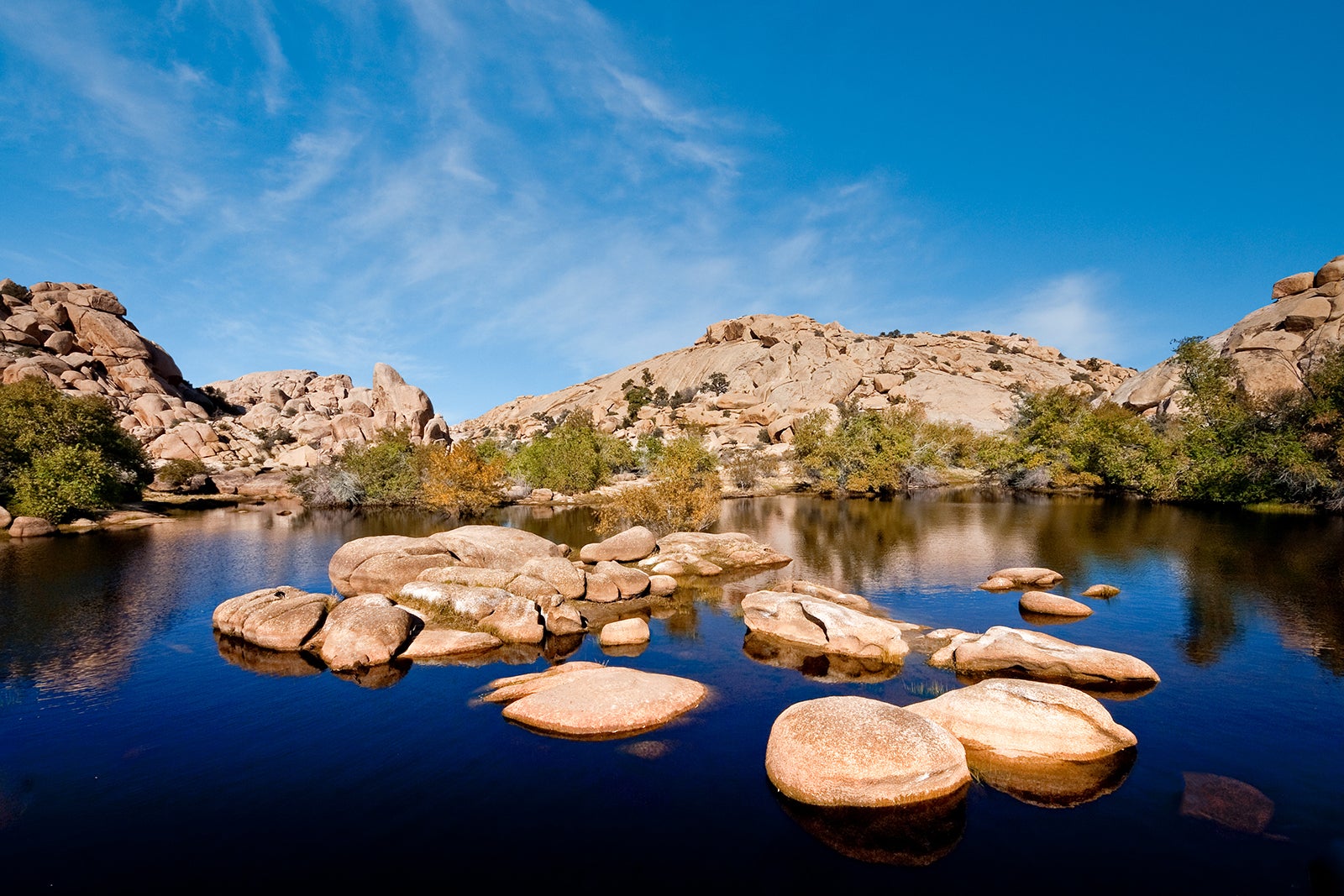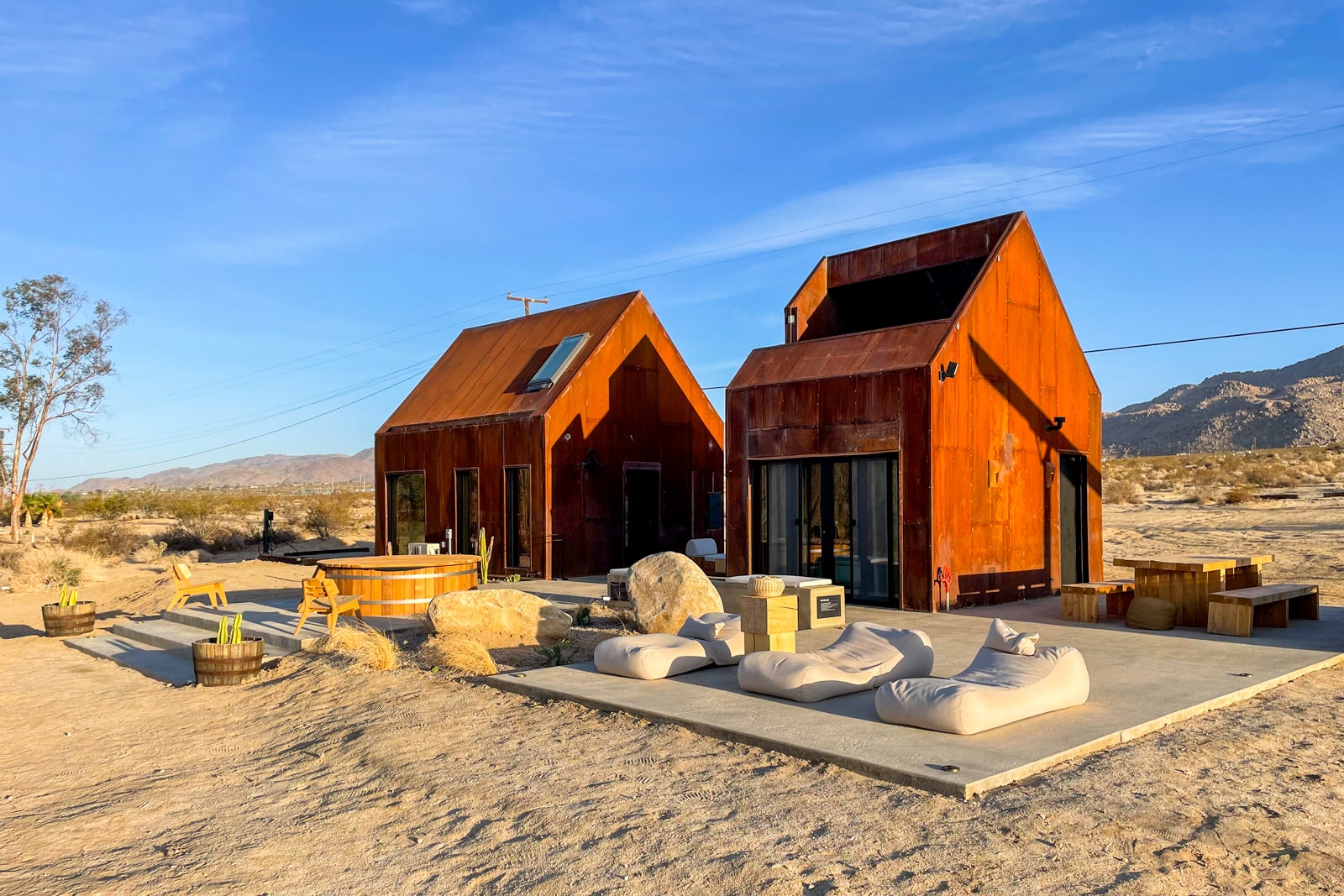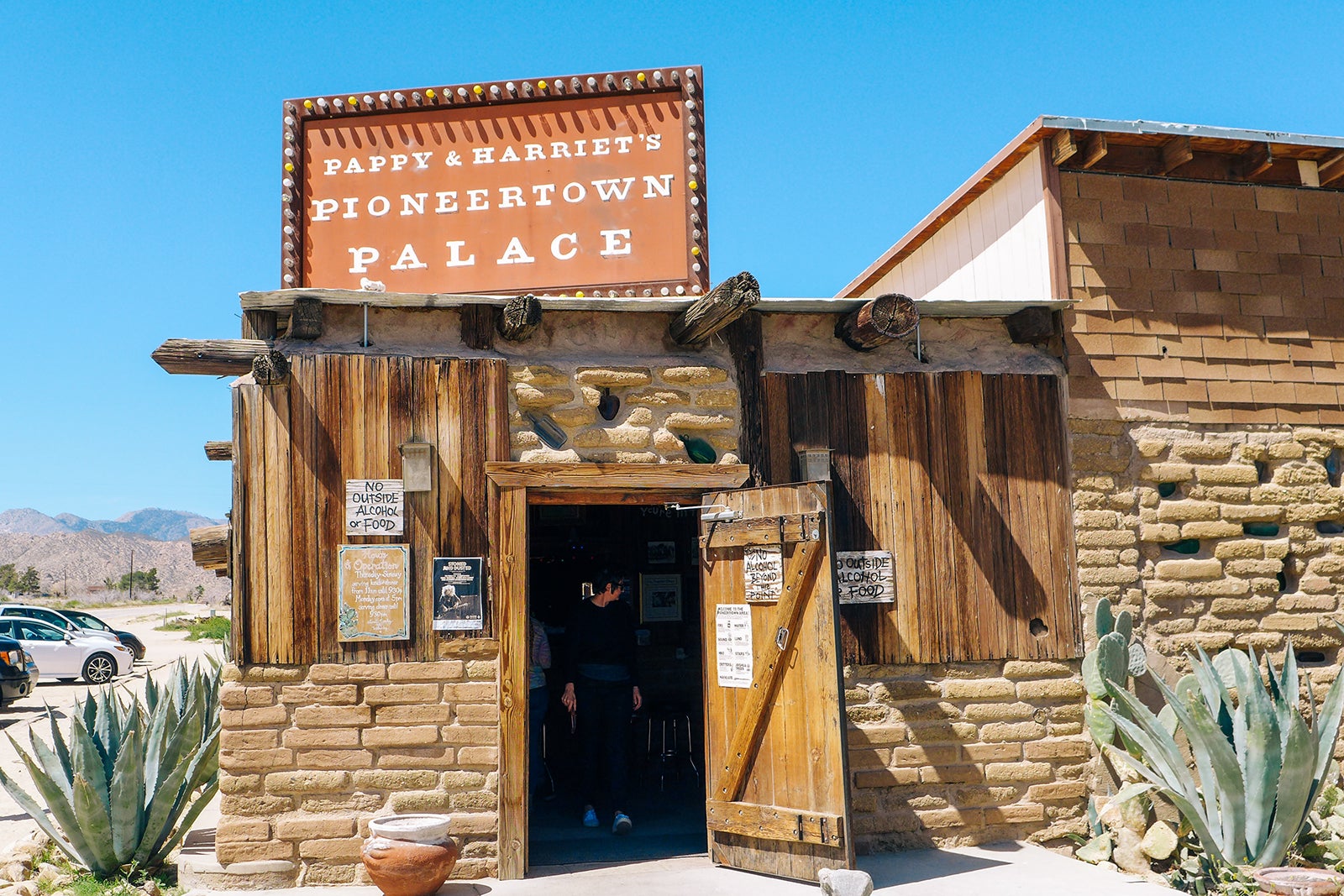A little more than two hours east of Los Angeles, Joshua Tree National Park is an otherworldly expanse covering nearly 800,000 acres in the high Mojave Desert.
Here, majestic boulders mix with striking Joshua Trees, known for their spiky, spiny, twisty profile. These plants — which, fun fact, are not actually trees but succulents — are found only in California, Arizona, Nevada and Utah. This national park is arguably the best place to observe large, undisturbed clusters of them.
With more than 3 million annual visitors, it’s within the top 10 most-visited national parks in the U.S., according to the National Park Service — and for good reason. In addition to admiring the park’s namesake plants up close, you can see where two different desert ecosystems meet alongside a wide variety of plants and wildlife. Plus, Joshua Tree National Park offers dark night skies and geologic wonders that draw hikers, campers and tourists from around the world.
With an abundance of hiking and nature trails for all skill levels as well as multiple campgrounds, the park is a must-see. You might visit on a daytrip, stay overnight in a tent or merely pass through the park for a scenic drive between LA and Las Vegas.
Here’s everything you need to know.
Before you go
Joshua Tree National Park is open every day, 24 hours a day for the entire year, even on holidays such as Christmas. However, some areas are for day use only; for example, visitor centers operate on a set schedule.
Like other national parks, you’ll pay an entrance fee. A private vehicle costs $30, a motorcycle costs $25, and an individual walking in or being dropped off is $15. You could also purchase an annual pass to Joshua Tree National Park for $55. If you plan to visit more than a couple of national parks a year, your best bet is to buy the national parks annual pass for $80 (which covers one vehicle or four per-person fees).
You can purchase passes on-site at a visitor center or while driving through an entrance booth. Or, you can save time by buying one ahead of time online.
Reservations are only required for campground stays or certain tours, and you must obtain permits for bouldering, overnight backpacking and conducting scientific research.

Daily Newsletter
Reward your inbox with the TPG Daily newsletter
Join over 700,000 readers for breaking news, in-depth guides and exclusive deals from TPG’s experts
Once inside the park, there are no gas stations, hotels or food. Public restrooms, however, are available. It’s imperative that you bring any water, food or supplies you may need.
There are three visitor centers and one nature center that are all open to the public for more information to help plan your visit once you arrive.
Getting there and around
Joshua Tree National Park is 130 miles from Los Angeles, 40 miles from Palm Springs and 218 miles from Las Vegas. Given that it’s situated within actual desert wilderness, it’s not wise to rely on public transportation to get here. You’ll likely be driving from one of the aforementioned cities, so you’ll need a car to visit and navigate the park.
While you might be able to arrive via a ride-hailing app such as Uber or Lyft, counting on one to leave could be risky. Cell service can be spotty inside the park, and drivers are not typically sticking around to look for customers. Even if you did find one who was, by chance, dropping someone else off, it would be a pricey ride given the park’s remote nature. A drive back to the nearest major city could cost hundreds of dollars.
The best option is to drive your own car or rent one from wherever you start your trip. This will ensure you arrive as planned, stick to your budget and don’t get stranded.
Best time to visit
It should come as little surprise to learn that it’s best to avoid visiting the desert in the summer.
Though the park is open year-round, temperatures regularly average around 100 degrees Fahrenheit during the summer months. Being outside in such intense weather can leave you at risk for heat stroke, dehydration or even death.
If you do plan to visit in the summer, try to avoid being outside for extended periods of time during the afternoon or during the hottest parts of the day. Be sure to bring an abundance of drinking water to stay hydrated.
Related: 8 national parks to visit in the spring
Even though the desert location is associated with warmth, the area can experience below-freezing temperatures in winter, too. Snow happens, and hypothermia is a real hazard to consider this time of year.
As such, the best time to visit Joshua Tree National Park is either in late fall to early winter, after the summer heat breaks but before chilly temperatures and possible snow move in. Alternatively, you could visit from late winter to early spring before the heat arrives.
What to see and do
Popular driving routes and attractions
There’s so much to see and do in Joshua Tree that you could easily spend several days here. If you only have one day, stopping at the visitor center can help you map out the highlights.
Even just a drive along Park Boulevard, the main road that goes through the park, will allow you to see large fields of Joshua trees at every turn. There are several pull-off areas along the road, as well as large parking lots associated with popular trails and attractions.
For the latter, Skull Rock is a top sight. Rain erosion has caused a large boulder to appear as if it has hollowed-out eye sockets. With an adjacent 1.7-mile nature trail, it’s a good spot to snap a photo and then take a short hike.
Additionally, novice hikers should head to Hidden Valley, a relatively easy 1-mile loop. Surrounded by magnificent boulders, the path goes through a small valley filled with desert plants. It can be rocky in places, but it’s mostly flat; the hardest parts are similar to climbing short sets of stairs.
There is also Barker Dam, a mostly flat, 1.1-mile loop through Joshua trees, monzogranite rock formations and a rock art site. The name refers to an actual dam and reservoir, which can fill with water after heavy rains (though it is typically dry).
For an easy nature walk, stop at the Cholla Cactus Garden nature trail. At just a quarter of a mile, this flat loop has a partially raised walkway through a landscape of spiky cholla cacti, affectionately known as teddybear cholla. While the name might sound adorable, be wary: The spikes are incredibly sharp. If you visit in spring, you can spot hedgehog cacti that pop with bright, beautiful magenta blooms.
For an incredible vista over the desert, drive up to Keys View. The fully paved 500-foot loop sits atop the Little San Bernardino Mountains; it overlooks canyons and the entire Coachella Valley, as well as the Salton Sea and Mount San Jacinto in the distance. It’s a beautiful spot to watch the sunrise or sunset.
Hiking trails
Joshua Tree is a hiker’s dream, and in addition to the aforementioned trails, several longer and more strenuous hikes can easily fill one or several days.
Ryan Mountain is a popular hike that leads to one of the tallest points in the park with panoramic views. The 3-mile, out-and-back trail gains 1,050 feet in elevation and passes through stunning rock formations, including Pinto Gneiss, which is the oldest type of rock in the park, estimated to be 1.8 billion years old.
For a longer hike, consider Lost Horse Loop, a 6.2-mile trail to a historic mining site in an area where Bighorn sheep roam. With little shade and unrelenting heat, this trail can be quite difficult in warmer months. Lost Horse Mine is a similar but shorter option, as well.
While you may associate the desert with a harsh, barren landscape, the park is also home to oases with verdant vegetation. Fortynine Palms Oasis is one such trail. The 3-mile out-and-back trek gains 300 feet in elevation up and over a mountain ridge, leading to a lush oasis filled with leafy fan palms fed by a water spring. Just be aware that the trail closes in summer to allow herds of Bighorn sheep exclusive access to the water, which they rely on to survive.
Lost Palms Oasis is a similar option, accessible by a 7.5-mile out-and-back route that includes a challenging climb gaining 500 feet in elevation.
Finally, for a collection of moderate to difficult backcountry hikes, visit the Black Rock area of Joshua Tree National Park. This isolated section is not connected by roads to other areas of the park. To access it, you must leave the main area and re-enter south of Yucca Valley.
Biking
Cyclists need to know that bike riding inside the park is restricted to roads shared with motor vehicles, and bike riding is forbidden on trails. There are no bike lanes in the park, and most paved roads do not have a shoulder.
If you’d like to cycle in Joshua Tree National Park, the best place to do so is on backcountry roads. There, you’ll find more than 1,000 square miles of wilderness with dirt roads for mountain bikes, as well as four-wheel-drive vehicles.
Rock climbing
With such impressive boulders on display, rock climbing is also a major draw.
The park has more than 8,000 climbing routes to choose from, but permits are required to place, replace or remove fixed anchors. There are also several rules to know before embarking on any bouldering. For instance, you should refrain from altering any rock or changing any established climbs; also, avoid vegetation and use only neutral- or rock-colored fixed anchors.
Where to stay
The best way to take advantage of everything there is to see and do within Joshua Tree National Park is to make your visit an overnight one. While there is no official hotel within the park, there are many lodging options ranging from hotels to on-site camping, as well as vacation rentals and glamping.
Hotels
The widest variety of luxury, boutique and family-friendly resorts are in Palm Springs, though that’s about 45 minutes away. Staying closer to the park entrance is more convenient, though lodging will be more limited.
Marriott, Hilton, IHG and Best Western loyalists can all earn or redeem points at properties near Joshua Tree National Park.
In the adjacent town of Twentynine Palms, Holiday Inn Express and SureStay Plus by Best Western offer standard but comfortable accommodations with one or two beds and outdoor pools. Both are a short drive from the park’s entrance, with breakfast included. Holiday Inn starts at $134 and SureStay at $112.
At Marriott’s Fairfield Inn and Suites, also in Twentynine Palms, rooms range from studios to suites; amenities include a complimentary breakfast buffet and an outdoor pool, and rates begin at $110.
Related: Highs and lows: The best places to stay near Joshua Tree National Park
Additionally, Hilton recently announced a new partnership with AutoCamp, an outdoor lodging brand known for glamping-style accommodations that range from kitted-out Airstream trailers to luxury cabins and tents. There’s an outpost in Joshua Tree National Park.
Each AutoCamp location is distinct, but all feature signature amenities such as a clubhouse for gathering and dining, as well as grab-and-go items to purchase for a campfire or grill. The Joshua Tree location, in particular, has a pool, bicycle rentals and morning yoga. Rates start at $199, typically.
For a boutique option, Mojave Sands Motel in Joshua Tree is an intimate retreat with just five rooms starting at $185; each room has beamed ceilings, platform beds, private patios and record players with assorted vinyl. Some have outdoor showers or kitchens, too.
A bit further from the park entrance, but not quite as far as Palm Springs, is Pioneertown; it’s a former working movie set from the 1940s for old Western flicks that’s been preserved for tourists. Here, you’ll find the Pioneertown Motel, which was originally built in 1946 to house visiting movie stars who were in town to film. Famously, Gene Autry played poker until sunrise in room 9. Rates begin at $175. The motel is about 25 minutes from the park yet it feels worlds and eras away.
Vacation rentals
Vacation rentals are perhaps the most common lodging option to be found near the park, and listings saturate the towns of Joshua Tree, Twentynine Palms and Yucca Valley. Here, you’ll find everything from luxury homes to geodesic domes and yurt-style tents. Airbnb or Vrbo are good places to start, but other options exist, too.
Related: 10 ways to use points to book vacation home rentals
For example, the Bungalows by Homestead Modern in the town of Joshua Tree is a collection of 14 boutique midcentury-style suites. They all come with kitchens or kitchenettes, private patios, heating, AC, internet, luxe Parachute linens and Malin & Goetz toiletries. While these are vacation rentals, staying here includes access to hotel-like amenities such as a communal outdoor space, a pool, hot tub, grills, fire pit and wellness activities. In the offseason, prices start at $185.
Camping
There are 500 campsites within Joshua Tree National Park, most of which operate year-round. Most are reservable from six months before your stay to the day of your stay. While 500 sites might seem like a lot, making a reservation ahead of time is highly recommended when possible; this is especially true over holidays, weekends or during high season. Just know that some locations are first-come, first-served.
Overnight fees start at $15 per night, and amenities depend on each specific location. Only some have water; most have pit or flushing toilets and fire grates. It’s important to research locations ahead of time and come prepared with what you’ll need for the entirety of your stay.
There are also nearby campsites and RV parks outside the park in towns such as Joshua Tree, Twentynine Palms, Yucca Valley and Pioneertown.
Where to eat
With no food or drink available inside the park for purchase, make sure to arrive with all the supplies you’ll need while exploring.
Once you exit, there are many places to eat in the surrounding towns that are well worth a stop on their own.
Conveniently near one of the park’s visitor centers, Joshua Tree Saloon is a honky tonk-style dive bar and restaurant serving staples like burgers, tacos and wings. They’re open every day of the year with live music on weekends.
Another well-known and beloved establishment is the legendary Pappy and Harriet’s in Pioneertown. This barbecue restaurant and lively music venue is known for drawing A-list talent; Paul McCartney, Vampire Weekend and Phoebe Bridgers have all performed here.
About 25 minutes away in the neighborhood of Flamingo Heights, just north of Yucca Valley, La Copine is a highly lauded diner serving new American cuisine dishes that change with the season. It’s the best choice for foodies with more of an upscale palate.
For a sweet treat or straight-from-the-oven baked goods, don’t miss Campbell Bakery in Twentynine Palms. The owners worked in famous New York City bakeries like City Bakery and Bird Bath Bakery before relocating to the desert to open this tiny shop; the menu changes daily. Locals wait in long queues for incredible cakes and cookies, delicious sandwiches and fresh-baked loaves. Arrive early before everything sells out.
Tips
- When navigating a harsh desert environment like Joshua Tree, it’s important to arrive over-prepared, no matter how long you plan to stay.
- Staying hydrated is of the utmost importance, both in the intense summer heat and in the winter, to avoid hypothermia. Water bottle fill stations are available in three locations, and you can fill water jugs at certain stations and campgrounds, as well. However, much of the park does not have potable water, so bring more water than you think you’ll need. Similarly, there are no restaurants or gas stations, so arrive fully fueled with both gas and nourishment.
- If you plan to drive the entirety of the park, it will take approximately 45 minutes to travel between the west and north entrances. Driving between the north and south entrances takes around an hour; between the west and south is the longest drive, about an hour and a half.
- Cellphone service is known to be very spotty, though there is free public Wi-Fi inside visitor centers. Download free offline maps from the National Park Service before you arrive, or grab a physical copy from the visitor center or an entrance booth to ensure you don’t get lost.
- Given the varying temperatures, it’s wise to dress in layers. Even if you’re visiting in spring when the days are warm, the nights and mornings can be chilly.
- One of the most important things to know when visiting a national park is to leave no trace. There are seven principles to follow: dispose of all waste properly, leave all natural objects — even something as seemingly simple as a rock — behind, refrain from taking anything home as a souvenir, respect wildlife by keeping a safe distance, stay on designated trails and within campsites, be courteous to other visitors and follow all NPS rules and regulations.
Related reading:

